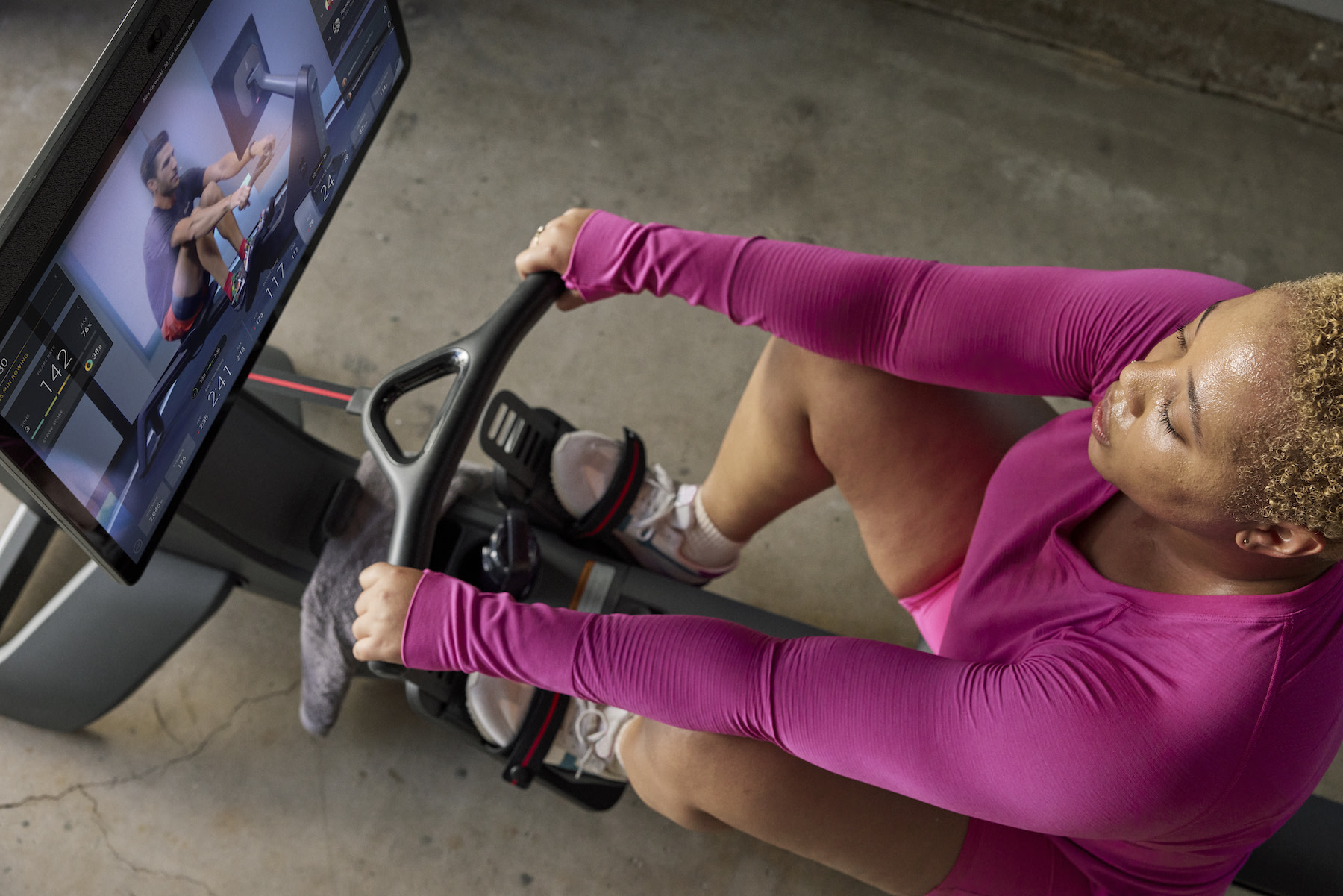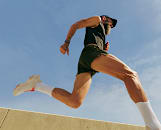
Try These 4 Dynamic Warm-Ups Before Your Next Row
Prime all of the right muscles for a more effective rowing machine workout.
By Alyssa Sybertz•
Why You Should Warm Up Before Rowing
Dynamic Warm-Up Exercises for Rowers
Cooldown Stretches for Rowers
If you’ve ever taken an exercise class or worked out with a trainer, you’ve likely heard something about the importance of warming up before exercising. Indeed, a proper warm-up can go far towards getting your body ready to maximize the time you’re about to spend working out. And while any warm-up is better than nothing at all, doing a warm-up that’s tailored to the activity you’re about to do is the most beneficial. If you row, that means a specific rowing machine warm-up.
Discover more ways to reach your goals with Peloton
Here, we’re focusing on the warm-up exercises that you can complete both on and off the rower to prime your body for a rowing workout, plus the movements and stretches that will help you recover effectively when you’re done.
Why You Should Warm Up Before Rowing
“In general, a pre-workout warm-up is useful for increasing the blood flow to your muscles, both targeted and broad,” explains Peloton Row instructor Alex Karwoski. “Additionally, warming up gradually over a few minutes rather than just jumping right in and demanding significant effort from your body increases your muscles’ temperature (hence, 'warm-up' as the name) and allows for increased flexibility.”
To put it another way, research has found that it is significantly easier to injure a muscle at lower temperatures. More specifically, muscles tear much easier at temperatures below core temperature (98.6 degrees Fahrenheit) than they do at or above core temperature. So warming up before your workout helps ensure that your muscles are loose and flexible enough to complete the movements required of them during your workout with a significantly lower risk of injury.
For rowing in particular, the warm-up becomes especially key because rowing is a full-body workout. “Rowing, similar to most other cardio-based workouts, requires the coordination of multiple body parts moving in sync,” explains Alex. “In order to properly execute the rowing motion you want to have loose/flexible areas specifically around your hips, knees, shoulders, and ankles.” If one of these areas is tight or not properly warmed up, you may start using the muscles in another area to compensate, which can create a disjointed, awkward rowing stroke that could potentially lead to injury down the line.
How Much Time Should You Spend Warming Up for Rowing?
“Taking a few minutes before really starting to push yourself on the machine to let the muscles and joints warm and loosen up is crucial to having a successful (and fun) row!” Alex says. Indeed, you don’t need to spend too long warming up—a few stretches off the rower and a few minutes on the rower should be sufficient.
That said, take into account the temperature of your body and of the room as you prepare to row. If it’s winter and you keep your Peloton Row in the basement or garage where there’s no heat, it may be worth lengthening your warm-up just a bit to make sure your body is warm. On the flip side, if it’s summer and you’re sweating before you even sit down, a couple stretches targeting the parts of the body that get the most work while rowing (more on those below) is likely enough to get your body ready to go.
Dynamic Warm-Up Exercises for Rowers
The ideal dynamic warm-up for a rowing workout combines a few targeted stretches off the rower followed by some gentle movement on the rower. Here are our suggestions.
Off the Rower: Hip Flexor Stretch
“One of my go-to warm up stretches is the hip flexor stretch,” says Alex. “The hips are such a heavily-relied upon part of the body throughout the rowing stroke—they are compressed every time you come forward to the catch, and then they are exploding with force as you drive the legs away to start the drive. A tight hip flexor can impede compression and limit the amount of force generated.” Add in the fact that the hip area is one of the tightest areas for lots of people, due to the amount of time spent in a seated position at a computer or in a car, and this stretch becomes both necessary and luxurious.
How to Do it:
Step one foot forward into a deep lunge, bending your front leg and extending your back leg straight until you feel the stretch across the front of the hip of your back leg.
Hold for a few deep breaths, then switch sides.
Off the Rower: Lunge with Trunk Twist
“Another go-to is the lunge with trunk twist,” Alex shares. “Although rowing on the machine does not require trunk rotation, it is still beneficial to have the abdominals loose enough to sustain against/brace the force coming from the legs. Incorporating the lunge, which activates the quads, hamstrings, and glutes with a trunk twist, which stretches the hips and supplies core extension, is an easy way to light up a lot of what the rowing stroke requires.”
How to Do it:
Step your right foot forward and bend both knees into a deep lunge.
Keeping your legs steady and your hips facing forward, twist your torso to the right, then return to center.
Push off your right foot to stand back up.
Repeat on the left. Do five on each side.
On the Rower: Gentle Rowing
“As boring as this sounds, rowing lightly for a few minutes on the machine is really an incredibly effective warm-up,” Alex says. “The main benefit behind this type of warm-up is that you are performing THE rowing-specific movement that mimics exactly what you'll be doing at higher intensities for more sustained periods of time later. By warming up like this, you are giving your joints and muscles the freedom to loosen up within the pattern you'll be continuing within for the duration of your rowing workout.” Indeed, gentle rowing essentially warms up your body while giving it a preview of what’s to come.
How to Do it:
Start rowing at an easy pace for a minute or two.
Once you feel your muscles start to warm, you can do a few 20-30-second bursts at a moderate pace, returning to an easy pace in between.
On the Rower: Stroke Breakdown
During your gentle rowing, it can be especially helpful for beginner rowers to spend a minute or so breaking down the stroke into its individual parts. Not only will this serve to further warm up the muscles that will be used most while you’re rowing, but it will also remind you what each segment of the stroke should feel like to help you maintain consistent rowing form throughout your workout.
How to Do it:
Pause at the finish of the stroke, with your legs straight, leaning slightly back, and your arms pulled in.
Do 10 to 15 strokes with just your arms.
Continue with another 10 to 15 strokes adding in the body swing.
Finally, perform another 10 to 15 full strokes adding in the legs.
Cooldown Stretches for Rowers
Once your workout is completed and you are fatigued and sweaty, you have the perfect opportunity to make sure your muscles remain loose and primed for your next row. Enter the cool down. “In the post-row stretches, I always try to focus on the two big muscle groups: legs and body, back especially,” Alex says. “Despite rowing usually being confused for a 'pulling' stroke, it is really demanding a push from the legs and a strong bracing from the trunk/back to hold that power generation and then swing it through.”
Some of the best stretches for targeting these areas:
Hip flexor stretch
Standing hamstring stretch
Figure four (which you can do while still sitting on the rower)
Child’s pose
Cat/cow stretch
Alex is also a fan of foam rolling as part of your cooldown. “I love using a foam roller after a row to really target specific areas on my legs and on my back. Gently rolling up and down, then holding as I find a spot that feels particularly tight after taking stroke after stroke for however long the workout was.” Consider incorporating foam rolling into your cooldown once or twice a week.
Looking for a guided warm-up and/or cooldown? The Peloton App has rowing warm-ups and cooldowns you can try on any rowing machine.
Want to switch up your low impact cardio?

Peloton App
Access thousands of classes with no equipment needed.
This content is for informational and educational purposes only and does not constitute individualized advice. It is not intended to replace professional medical evaluation, diagnosis, or treatment. Seek the advice of your physician for questions you may have regarding your health or a medical condition. If you are having a medical emergency, call your physician or 911 immediately.
Level up your inbox.
Subscribe for a weekly dose of fitness, plus the latest promos, launches, and events.
By providing your email address, you agree to receive marketing communications from Peloton.
For more about how we use your information, see our Privacy Policy.










